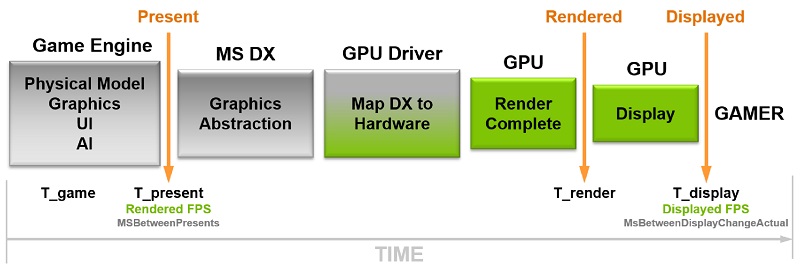Nvidia releases their FrameView app for free game performance analysis
Nvidia releases their FrameView app for free game performance analysis
Nvidia has now thrown its hat into the ring with FrameView, a new performance analysis tool which aims to deliver both performance and power benchmarking capabilities, offering support for DirectX 9, 10, 11 and 12, OpenGL, Vulkan, and Universal Windows Platform (UWP) applications, enabling benchmarking for practically every game in the market.Â
With this move, Nvidia is effectively offering the market its own flavour of PresentMon, an open source benchmarking utility which also acts as the basis of AMD’s OCAT tool. The difference with FrameView is Nvidia’s secret sauce, which adds power data into the mix to deliver power efficiency data, a factor which Nvidia believes will highlight one of the company’s key advantages over its competition.Â
To get its efficiency data, Nvidia’s FrameView notes the reported power usage of your system’s graphics card to judge efficiency, creating what will be the first stumbling block for PC hardware enthusiasts. Self-reported statistics are difficult to trust, especially when a “faulty” GPU BIOS or a “flawed” GPU driver could cheat the system to report favourable efficiency results. Even so, the tool should give end users a good indication of how much more efficient their new graphics card is, provided they are comparing upgrading to a new GPU from the same brand.Â
Â
Regardless of what way you look at FrameView, it ultimately brings more users to PresentMon and incentivises the tool’s future development. This move will also give AMD plenty of reasons to continue working on OCAT, their competing performance analysis tool.Â
With FrameView, the frametimes of your games will be measured, both in terms of rendered frame rate and displayed frame rate, providing a full picture of a gamer’s user experience. Average framerates are recorded alongside 90%, 95% and 99% frametimes, which will enable PC users to judge the framerate consistency of their games.Â
When it comes to power, Nvidia offers a new metric called Performance Per Watt, which is calculated by dividing the user’s framerate by the GPU power consumption. This results in a data point that is measured in Frames per Joule. Â
Ultimately, the usefulness of Nvidia’s tool depends on how easy to use the tool is, the accuracy of the data it provides and how easily the data that’s generated by the tool can be analysed and digested.Â
FrameView can be used on all graphics cards, not just Nvidia hardware, which means that Radeon and Intel users will be able to utilise FrameView for benchmarking purposes. FrameView is available to download from Nvidia here.Â
You can join the discussion on Nvidia’s FrameView app for game benchmarking and power analysis on the OC3D Forums.Â



